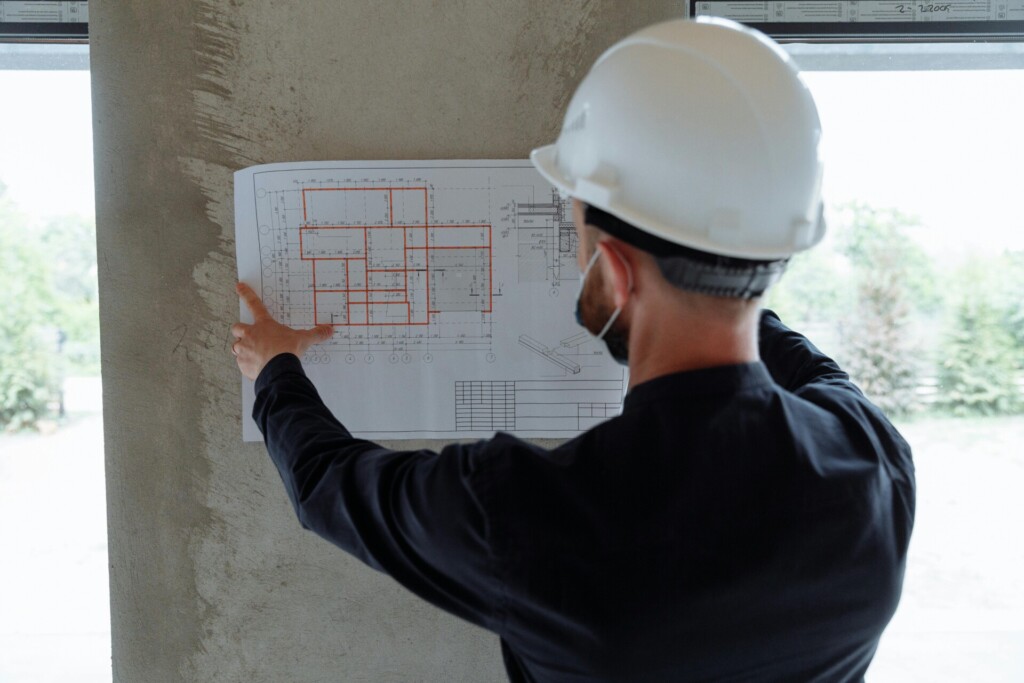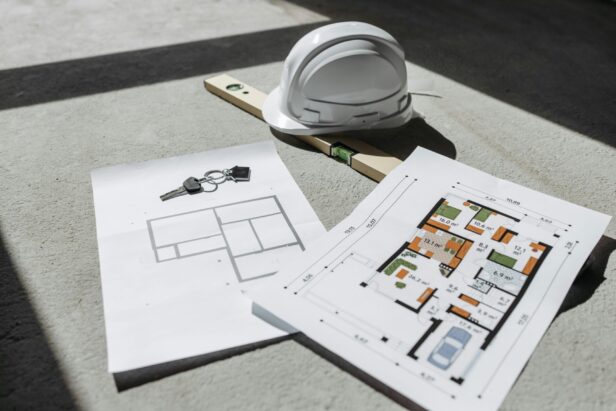Commercial renovation projects fail 30% more often than new construction due to hidden complexities, outdated systems, and regulatory changes mid-stream. The difference between a smooth renovation and a costly disaster often comes down to one decision: selecting the right commercial renovation contractor.
We see property owners and developers make this choice daily at EB3 Construction, and the stakes couldn’t be higher. The right general contractor brings proven renovation services spanning interior upgrades, exterior improvements, tenant improvements, preconstruction planning, and post-construction support that keeps your facility operating smoothly long after turnover.
Which Experience And Capabilities Matter Most?

Industry experience stands as the foundation of effective commercial renovation. Contractors familiar with your sector understand the regulatory landscape, material requirements, and operational challenges unique to your business type. We’ve seen how healthcare facilities demand different fire safety protocols than retail spaces, while manufacturing environments require specialized ventilation systems that office buildings don’t need.
Local knowledge accelerates project timelines in ways that can’t be replicated. Established relationships with building inspectors, permitting offices, and regional suppliers create smoother workflows. When we work within our established markets, we know which inspectors prioritize structural integrity reviews and which suppliers can deliver materials during supply chain disruptions. This familiarity prevents delays that unfamiliar contractors often encounter.
Core Renovation Capabilities
Complete renovation scope strength separates capable contractors from those who rely heavily on subcontractors. Interior upgrades should encompass space planning, wall systems, flooring, and ceiling work. Exterior capabilities must include facade improvements, landscaping coordination, and building envelope upgrades. Code compliance updates, particularly accessibility modifications, require specialized knowledge that prevents costly rework.
Tenant improvements represent a significant portion of commercial renovation work. We approach TI projects by delivering complete build-outs that span from structural walls and MEP systems through final finishes. Standard TI costs are typically scoped per square foot, though complex layouts or specialized systems can impact pricing. The ability to coordinate multiple trades while maintaining schedule and budget requires proven TI experience.
Delivery Methods And Preconstruction Services
Design-build delivery offers single-point accountability that can accelerate project timelines. Early collaboration between our design and construction teams identifies potential conflicts before they impact the schedule. This integrated approach reduces change orders and provides clearer cost visibility throughout the project lifecycle.
Preconstruction services form the backbone of successful renovations. Comprehensive budgeting considers current market conditions and material lead times. Site analysis reveals existing conditions that impact scope and cost. Design collaboration ensures constructability while meeting functional requirements. Procurement planning secures critical materials and equipment. Bid packaging optimizes subcontractor selection. Permit coordination prevents regulatory delays.
Project And Construction Management Depth
Effective project management encompasses scheduling coordination, cost control systems, quality assurance protocols, and risk mitigation strategies. We maintain detailed construction schedules that track dependencies between trades and identify critical path activities. Cost control involves regular budget reviews, change order management, and forecasting to prevent overruns.
Construction management requires on-site supervision that ensures quality standards and safety compliance. Daily coordination between trades, material deliveries, and inspection schedules keeps projects moving forward. Problem-solving capabilities become essential when unexpected conditions arise or schedule adjustments are needed.
Specialized Trade Coordination
MEP systems integration demands coordination between HVAC, electrical, and plumbing contractors. Fire safety systems require specialized knowledge of code requirements and inspection procedures. Accessibility modifications must comply with ADA standards while maintaining functional space layouts. Each specialized trade brings unique scheduling requirements and quality standards that experienced general contractors understand and manage effectively.
Site improvements and post-turnover services complete the renovation process. Site work may include parking lot improvements, utility connections, and landscaping installation. Punch lists document final completion items. Warranties provide protection for both materials and workmanship. Training ensures facility staff understand new systems. Maintenance programs support ongoing operations and extend system lifecycles.
What Credentials, Insurance, And Safety Standards Should You Verify?
Credentials verification requires systematic documentation checks before awarding any commercial renovation contract. We start with contractor licensing because it establishes legal authority to perform the work and confirms minimum professional standards.
Licensing and certifications form the foundation of contractor verification. Request the primary contractor’s license number and verify its active status through your state’s licensing board database. Most states maintain online search tools that show license validity, expiration dates, and any disciplinary actions. For specialty trades like electrical, plumbing, or fire protection systems, each subcontractor needs current licensing specific to their scope. We also check for relevant industry certifications, such as EPA credentials for HVAC work or manufacturer-specific training for specialized equipment installations.
Insurance verification protects your project from significant financial exposure. Request certificates of insurance showing both general liability coverage and workers’ compensation policies. General liability should carry minimum limits of $1 million per occurrence, though larger commercial projects often require $2 million or higher. Workers’ compensation must cover all contractor employees working on your property. We recommend having insurance providers send certificates directly rather than accepting copies from contractors. State licensing boards emphasize insurance verification as a critical step in contractor selection since it confirms both coverage validity and policy terms.
Workers’ compensation becomes particularly important when multiple specialty trades work simultaneously on renovation projects. Without proper coverage, property owners face potential liability for on-site injuries involving uninsured workers.
Safety culture and record assessment goes beyond basic insurance requirements. Ask contractors about their formal safety programs, including employee training protocols, safety meetings, and incident reporting procedures. Request their OSHA recordable incident rate for the past three years and compare it to industry averages. We evaluate their approach to job site safety management, including personal protective equipment requirements, hazard communication, and emergency response procedures. Strong safety records often correlate with better project outcomes and fewer delays.
Compliance and permitting management demonstrates a contractor’s understanding of local regulations and building codes. Verify that the contractor handles permit applications, inspection scheduling, and code compliance for all renovation phases. We confirm their familiarity with local building departments, inspectors, and approval processes. For commercial renovations involving accessibility modifications, fire safety upgrades, or MEP system changes, contractors must understand current code requirements and inspection protocols.
Subcontractor vetting extends verification requirements to all specialty trade partners. Require proof that plumbing, HVAC, electrical, and fire protection subcontractors carry proper licensing and insurance. We request subcontractor lists during the bidding process and verify credentials for each specialty scope. This includes confirming that electrical contractors hold appropriate licenses for commercial work and that fire protection specialists maintain certifications for system installation and testing. Properly vetted subcontractors reduce project delays and ensure code compliance across all renovation phases.
How Should You Assess Project Management And Communication?

Strong project management and communication determine whether your renovation project runs smoothly or encounters costly delays. We evaluate contractors based on observable behaviors during the selection process that indicate how they will handle challenges once work begins.
Responsiveness during initial meetings and RFI processing reveals how contractors will communicate throughout your project. We look for teams that respond promptly to questions with clear, detailed answers rather than vague promises or delayed responses.
Identifying Your Single Point Of Contact
Successful renovation projects require one person who coordinates all moving parts. This project manager should demonstrate clear authority over subcontractors, scheduling decisions, and budget adjustments. Ask potential contractors to identify their designated project manager and verify this person’s experience managing similar commercial renovations.
The project manager handles stakeholder updates, change management processes, and daily coordination between trades. Without this central coordination, miscommunication between subcontractors creates delays and cost overruns that affect your timeline and budget.
Evaluating Planning And Control Systems
Examine how contractors approach construction schedule development and cost control. Look for realistic timelines that account for permit approval, material delivery, and potential weather delays. Strong contractors present detailed schedules with clear milestones rather than overly optimistic timeframes.
Cost tracking systems should provide regular budget updates and identify potential overruns before they become problems. Ask candidates to explain their budget monitoring process and how they communicate changes to project stakeholders throughout construction.
Risk mitigation planning separates experienced contractors from those who react to problems after they occur. Professional teams identify potential challenges during preconstruction and develop contingency plans to minimize project disruption.
Testing Problem-Solving Capabilities
Request specific examples of how contractors handled supply chain delays or unexpected scope changes on recent projects. Strong candidates explain how they maintained project milestones despite challenges and protected client budgets during material shortages.
Look for contractors who demonstrate proactive communication during crisis situations. They should explain how they kept stakeholders informed and what alternative solutions they implemented to minimize project impact.
Confirming Owner Alignment
Choose contractors who actively listen to your goals, budget constraints, and timeline requirements. During interviews, notice whether they ask detailed questions about your facility needs and operational requirements or simply present standard solutions.
Professional contractors explain trade-offs clearly when scope changes affect budget or schedule. They help you understand how different decisions impact project outcomes rather than making choices without client input. This transparent communication prevents misunderstandings and ensures your renovation meets both functional and financial objectives.
How Do You Compare Bids, References, And Value Without Surprises?
Smart bid evaluation starts with meticulous line-by-line analysis. We examine each proposal component to ensure accurate comparisons and identify potential gaps that could derail budgets or timelines.
Confirm Scope Inclusions Across All Major Categories
Every proposal should clearly itemize demolition requirements, debris hauling, and site cleanup protocols. Missing elements in these categories often surface as expensive change orders during construction. We verify that permits for structural modifications, MEP upgrades, and accessibility improvements appear as separate line items with realistic cost estimates.
Material specifications require particular attention during commercial renovations. One contractor might include temporary protection systems and daily cleanup while another excludes these services entirely. These seemingly minor differences can impact project costs by thousands of dollars and affect overall construction feasibility.
Match Material Specifications And Timeline Assumptions
Contractors often make different assumptions about material quality and installation methods. We require detailed specifications for flooring systems, ceiling finishes, and mechanical equipment to enable accurate comparisons. A proposal calling for basic acoustic ceiling tile costs significantly less than one specifying fire-rated assemblies with integrated lighting systems.
Timeline variations between proposals frequently stem from different approaches to procurement and installation sequencing. Some teams factor in longer lead times for specialty finishes or custom millwork, while others assume standard delivery schedules. Understanding these assumptions prevents schedule conflicts during construction execution.
Evaluate Contingencies And Allowance Transparency
Professional proposals include clearly defined contingencies for unforeseen conditions and allowances for owner-selected items. We look for contingency percentages between 5-10% depending on project complexity and existing building conditions. Allowances should specify exact dollar amounts allocated for items like lighting fixtures, plumbing fixtures, and finish selections.
Transparent pricing reveals where cost overages might occur during construction. Vague language around “miscellaneous costs” or undefined allowances often signal incomplete project understanding. We favor proposals that explain contingency triggers and allowance adjustment procedures upfront.
Balance Price Against Comprehensive Value
Unusually low bids merit careful scrutiny rather than automatic selection. We analyze what services or quality measures might be missing from discounted proposals. Complete renovation processes include proper site protection, waste management, and final cleanup that budget contractors sometimes exclude to achieve lower pricing.
Higher-priced proposals often reflect more thorough preconstruction planning and comprehensive project management services. These investments typically prevent costly rework and schedule delays that can exceed initial savings from cheaper alternatives. We evaluate whether premium pricing correlates with measurably better outcomes.
Verify References And Review Project Portfolios
Reference calls provide insights beyond written testimonials. We ask former clients specific questions about budget adherence, schedule performance, and long-term durability of completed work. Recent projects offer current performance indicators while older projects reveal how well systems and finishes have held up over time.
Portfolio reviews should include projects of similar scope and complexity in comparable building types. Photos alone don’t tell the complete story. When possible, we arrange site visits to active construction projects to observe work quality, site organization, and safety protocols firsthand.
Assess Post-Construction Support Capabilities
Strong contractors provide comprehensive turnover support including detailed punch list management, warranty documentation, and facility maintenance training. We prioritize teams that offer systematic closeout procedures rather than rushed project handoffs. These services reduce operational disruptions and help property managers maintain newly renovated spaces effectively.
Warranty coverage should extend beyond basic construction defects to include MEP systems, specialty finishes, and equipment installations. Clear warranty terms with responsive service commitments demonstrate contractor confidence in their work quality and long-term client relationships.
Conclusion And Next Steps

Commercial renovation contractor selection requires a systematic approach to balance capability, compliance, and cost. We begin by establishing clear renovation goals, ADA compliance requirements, and realistic project timelines. This foundation guides contractor evaluation and prevents scope creep that can derail budgets and schedules.
The contractor selection process involves multiple validation steps. We verify industry experience and local permitting knowledge while confirming complete service delivery from preconstruction through post-construction support. Licensing, insurance coverage, and safety records require thorough documentation. Project management capabilities and communication practices directly impact construction schedules and cost control. Line-by-line proposal comparison alongside reference validation helps avoid costly surprises during construction execution.
Energy efficiency upgrades and accessibility improvements should integrate into renovation scope early to maximize value and ensure regulatory compliance. We prioritize contractors who demonstrate clear project controls and comprehensive turnover support, including training programs and maintenance planning. These elements contribute to successful space delivery that meets operational requirements and budget constraints.
Ready to move forward with your commercial renovation project? Contact EB3 Construction to discuss your specific requirements and timeline.




